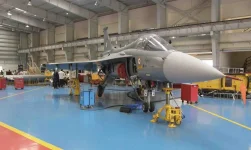- Views: 2K
- Replies: 7
Following notable successes in neutralising Pakistani aerial threats, India's Defence Research and Development Organisation (DRDO) is reportedly exploring innovative methods to enhance the capabilities of the Akash missile system.
The primary focus is on developing alternative propulsion fuels to increase the missile's range and operational efficiency without requiring expensive and time-consuming changes to its existing structure or design.
The Akash missile system is a critical component of India's air defence network. It has demonstrated its effectiveness by successfully intercepting various Pakistani aerial threats, including unmanned aerial vehicles (UAVs) and short-range ballistic missiles.
Building upon this proven track record, DRDO scientists are now working to optimise the Akash missile's ramjet sustainer motor. This air-breathing jet engine, which propels the missile after its initial boost, is targeted for an upgrade through the use of next-generation propulsion fuels.
These advanced fuels are anticipated to significantly improve the missile's overall performance, including its speed, manoeuvrability, and effective range.
According to informed sources, the DRDO's current initiative centres on creating new fuel formulations that can be seamlessly integrated into the existing Akash missile systems.
This approach cleverly sidesteps the need for substantial redesigns of the missile's airframe or other vital components, thereby saving considerable time and resources.
The ramjet sustainer motor is particularly suitable for such fuel-based enhancements, as advanced fuels can unlock greater thrust and improved burn efficiency, directly translating to better missile performance.
While precise details regarding the composition of these alternative propulsion fuels are not publicly available, initial indications suggest that their adoption could substantially expand the missile's operational capabilities.
The Akash system is already known for its versatility in engaging a wide array of aerial targets, such as fighter aircraft, drones, and incoming ballistic missiles. The planned fuel upgrade is expected to markedly improve its ability to intercept threats at longer distances.
This enhancement will further strengthen its position within India's comprehensive, layered air defence architecture, which also includes systems like the Medium-Range Surface-to-Air Missile (MR-SAM) and the Ballistic Missile Defence (BMD) program, creating multiple tiers of protection against aerial attacks.
This strategic decision to enhance fuel technology is part of India's wider effort to maintain a technological advantage in its regional security environment, especially in light of evolving missile and drone technologies.
The Akash system's reliability has been clearly demonstrated in recent engagements. DRDO's proactive efforts to upgrade its propulsion signal a commitment to ensuring that India's defence capabilities remain advanced and effective against potential future threats.
By concentrating on fuel improvements, the DRDO aims to keep the Akash missile system a potent deterrent, achieving significant performance gains without the need for extensive and costly hardware modifications.




